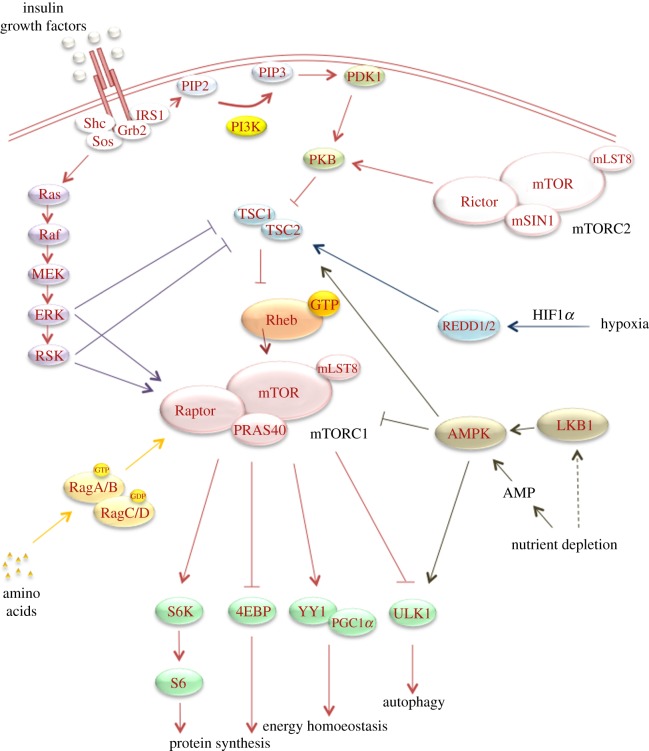Figure 1.
mTOR signalling pathway. Overview of major upstream regulatory signals of mTORC1 and major downstream effectors of mTORC1. Insulin and growth factors stimulate mTORC1 activity by binding growth factor receptors and stimulating downstream signalling. Activation leads to PIP3 generation by PI3K. PIP3 recruits PDK1, which in turn activates PKB. PKB represses the GAP activity of the TSC1/2 complex towards Rheb, which leads to GTP-loaded active Rheb and subsequent activation of mTORC1. Growth factors can simultaneously activate MAPK signalling, which stimulates mTORC1 activity via the inactivation of the TSC1/2 complex and the direct phosphorylation of Raptor. Finally, growth factors stimulate mTORC2 activity in a PI3K-dependent manner, but by an unknown mechanism. Amino acids also stimulate mTORC1 activity by activating the Rag GTPases. This activation recruits mTORC1 to the lysosomes where it is in close proximity to Rheb. Negative regulation of mTORC1 activity occurs when cells are deprived of oxygen or nutrients. Reduced availability of oxygen stabilizes HIF1α and thereby activates the REDD1/2 proteins that stimulate the TSC1/2 complex. Nutrient depletion stimulates the TSC1/2 complex via the activation of AMPK via either LKB1 activation or an increase in AMP levels. In addition, AMPK directly inhibits mTORC1 activity via the phosphorylation of Raptor. Upon activation, mTORC1 regulates a subset of downstream effects such as protein synthesis via S6K and 4EBP, autophagy via Ulk1 phosphorylation and energy homoeostasis via PGC-1α and YY1.

